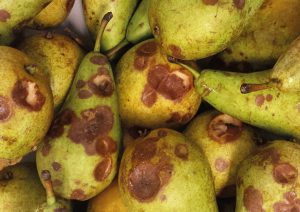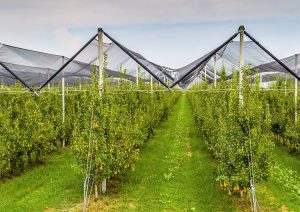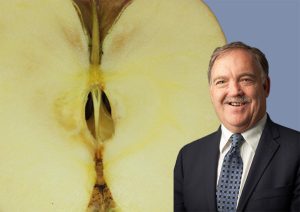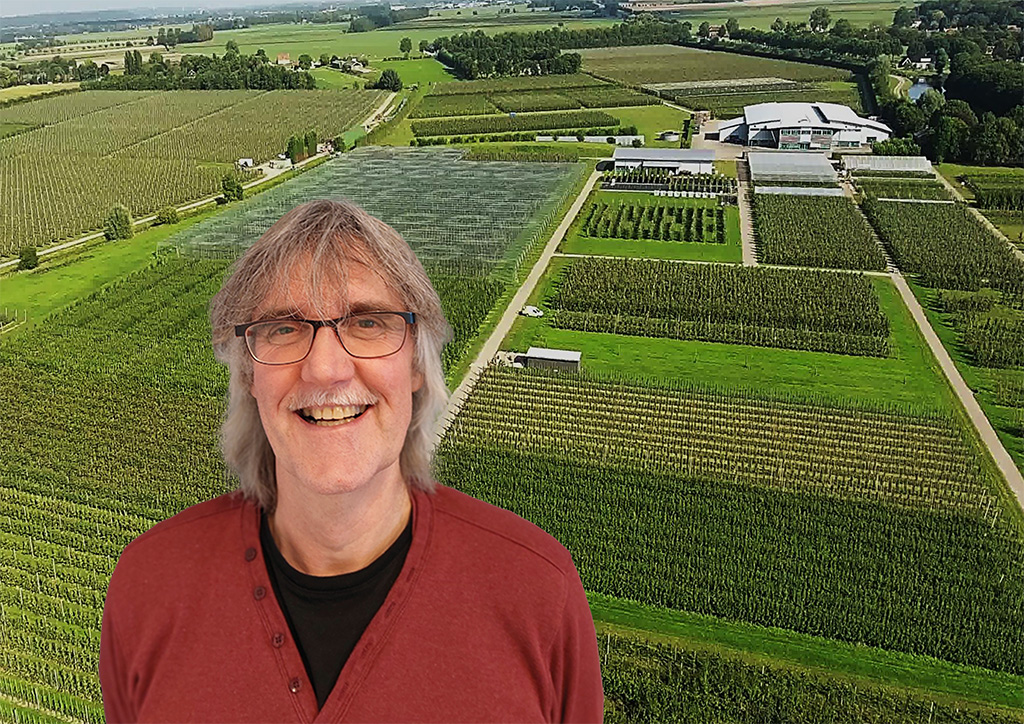
Postharvest disease management: a changing landscape
How is the Dutch pome-fruit industry responding to increasing restrictions on chemical postharvest disease control? By Anna Mouton.
The Netherlands has approximately 6 000 hectares of apple orchards and 12 000 hectares of pear orchards. The dominant cultivars are Elstar apples and Conference pears. “About 80% of our pears are Conference,” said Dr Marcel Wenneker. “The Conference monoculture is causing disease problems nowadays.”
Wenneker is a senior crop protection researcher at Wageningen University and Research in the Netherlands, with over 25 years of experience in fruit crops. He discussed the disease-control challenges faced by the Dutch pome-fruit industries in a keynote presentation at the Hortgro Postharvest Symposium.
The primary postharvest pathogens
Wenneker places fruit decay in three categories. Wound infections are caused by opportunistic fungi, such as Botrytis, Penicillium, and Monilia, which gain a hold in damaged tissues. These infections are relatively uncommon in the Netherlands, probably due to careful picking and proper sanitation.
Orchard infections are caused by primary pathogens that can invade otherwise healthy fruit, often resulting in symptoms at harvest. Examples include apple and pear scab (Venturia), European apple and pear canker (Neonectria), brown spot of pear (Stemphylium), and Phytophthora.
“And then we have the real storage rots,” added Wenneker. “They are often latent orchard infections, such as Neofabraea, which causes bull’s-eye rot, Cadophora, which causes side rot, and Colletotrichum, which causes anthracnose.”
Many factors influence the development of fruit rots. For example, orchard infections such as bull’s-eye rot are strongly correlated with weather conditions and inoculum pressure.
“In the Netherlands, we have found that Neofabraea is present in every apple and pear orchard. However, our main cultivars, Elstar and Conference, are not very susceptible,” said Wenneker. “If we were to introduce a susceptible new variety, then for sure we would have a lot of problems with Neofabraea.”
The most significant postharvest disease in the Netherlands is side rot of pears, which emerged about a decade ago.
“It pops up after 6–8 months in storage,” said Wenneker. “We can control it very effectively with a pyrimethanil drench. The question is, what happens when we lose pyrimethanil? In South Africa, you rely on fludioxonil and pyrimethanil, and what happens when you lose fludioxonil?”
Diminishing chemical control options
Wenneker presented a table of the current actives used for postharvest disease control in the Netherlands (Table 1). “You can see that we also rely on fludioxonil,” he said. “So it’s not only South Africa.”
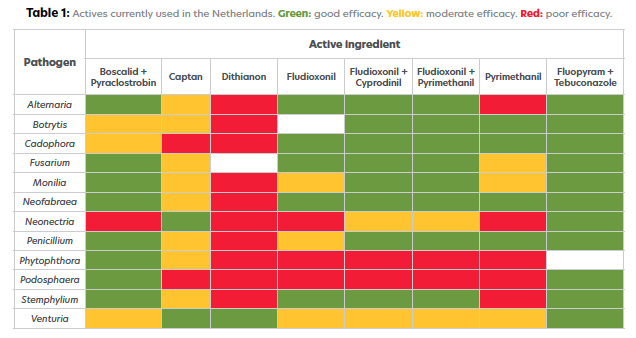
In the European Union, manufacturers must apply for renewal three years before their registration expires, submitting updated data on the composition, toxicology, residues, environmental fate and behaviour, and ecotoxicology of the active substance.
The European Food Safety Authority reviews the application, and the European Commission Standing Committee on Plants, Animals, Food and Feed decides whether to renew or not. If granted, renewals are usually for 15 years, but may include restrictions. If a renewal is not granted, the substance is banned.
Wenneker outlined the status of five fungicides: captan, cyprodinil, fludioxonil, tebuconazole, and sulphur. “Sulphur is considered a green product,” he said. “I don’t think it will be phased out, because that would be the end of organic growers in Europe.”
Captan has been approved with a new label, effective January 1, 2026. “It states that you have to reduce the dose by 60% and you have to use a precision sprayer, which most growers do not have,” said Wenneker. “So it’s very difficult for the growers to apply the new label.”
He believes that fludioxonil and cyprodinil are likely to be phased out by the end of this year, with the use of existing stocks allowed until 2026. The approval of tebuconazole is under debate, but it too is likely to be banned after 2027.
What are the alternatives?
As existing actives are lost, the pome-fruit industry will have to turn to alternatives (Table 2). “In Europe, I think we are going to rely on postharvest application of pyrimethanil for postharvest disease,” said Wenneker. “But we’ve observed that it’s not as effective as fludioxonil.”
Table 2: Potential alternatives if actives are phased out.
| Phased out | Alternatives | |||
| Captan | Dithianon | Sulphur | Bicarbonates | Calcium hydroxide |
| Cyprodinil | Pyrimethanil | |||
| Difenoconazole | Mefentrifuconazole | |||
| Fludioxonil + Cyprodinil | Boscalid + Pyraclostrobin | Pyrimethanil | 1-MCP postharvest |
Pyrimethanil postharvest |
| Tebuconazole | Mefentrifuconazole | |||
Several companies are developing new products, including succinate dehydrogenase inhibitors that disrupt fungal respiration, as well as so-called green products such as biocontrol agents. While biocontrol agents are available for wound pathogens, they are less helpful for managing latent infections.
“Green products are not as effective as chemical actives,” commented Wenneker. “They have an efficacy of maybe 50%–70%. That’s not good enough to control postharvest diseases.”
As chemical control options shrink, integrated disease control will become crucial. “We need a good understanding of the infection biology of our pathogens. Control should start in the orchard,” said Wenneker. “If you are able to control your disease in the orchard, you do not have a postharvest problem.”
In the Netherlands, all pickers wear gloves when harvesting, which has significantly reduced postharvest decay due to wound pathogens.
Pre- and postharvest sanitation are essential. Wenneker highlighted flume water as a source of infection, advising that water in grading systems must be kept clean, grading systems must be maintained and disinfected, and the exposure of fruit to flume water should be kept short.
Controlled atmosphere storage and 1-MCP (1-methylcyclopropene), although not directly fungicidal, discourage postharvest decay by slowing senescence and keeping tissues, such as stems, green, so that fruit tissues are less attractive to saprophytic moulds.
“I think we must look for a systems intervention approach to manage postharvest diseases,” concluded Wenneker. “We need discussion between specialists in storage, pathology, and molecular biology. That’s why I like meetings like this one, which brings us all together.”
To watch Wenneker’s presentation, visit the Hortgro YouTube channel.

